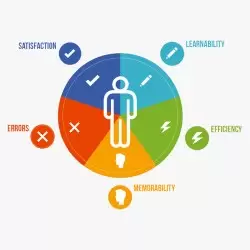Programming & Tech
User Testing
Procuring a user testing service is an essential step in ensuring that your product, website, or application meets the needs and expectations of your target audience. User testing helps identify usability issues, gather feedback, and make informed design decisions. Here are the steps to procure a user testing service:
-
Define Objectives and Scope: Clearly articulate the goals of the user testing. What specific aspects of your product or website do you want to test? What are your key performance indicators (KPIs) for the testing?
-
Budget Allocation: Determine how much you can allocate for user testing. This will help you narrow down your options and choose a service provider that fits your budget.
-
Research Service Providers: Look for user testing service providers. You can find these services through online searches, recommendations from colleagues, or platforms specializing in user testing services like UserTesting, UsabilityHub, or Userlytics.
-
Evaluate Service Providers: Consider the following factors when evaluating service providers:
- Experience and expertise in your industry or type of product.
- Portfolio of past projects and case studies.
- Pricing models (e.g., per participant, subscription-based).
- Available testing methodologies (remote, in-person, moderated, unmoderated).
- Reporting and analytics capabilities.
- Compliance with data protection regulations (e.g., GDPR).
- Test participant recruitment methods.
-
Request Proposals or Quotes: Contact the shortlisted service providers and request proposals or quotes. Provide them with detailed information about your project, including the scope, objectives, timeline, and any specific requirements.
-
Review Proposals: Carefully review the proposals from each service provider. Compare their offerings, pricing, and terms. Ask questions to clarify any doubts.
-
Select a Provider: Based on your evaluation and budget, select the user testing service provider that best aligns with your needs and goals.
-
Contract and Agreements: Draft a clear and comprehensive contract that outlines the scope of work, payment terms, confidentiality agreements, and any other relevant terms. Ensure all parties involved understand and agree to the contract.
-
Participant Recruitment: If the service provider is responsible for recruiting test participants, work with them to define your target user demographics and requirements.
-
Testing Execution: Collaborate with the service provider to set up the testing environment and provide access to your product or website. Monitor the testing process and address any issues that arise.
-
Data Collection and Analysis: The service provider will collect user feedback and data during the testing process. Review the findings and collaborate with them to interpret the results.
-
Report and Recommendations: Expect a detailed report with findings and recommendations based on the user testing. This report will be valuable for making improvements to your product or website.
-
Feedback Integration: Use the insights gained from user testing to make necessary changes and improvements to your product. Iterate as needed.
-
Payment and Closure: Ensure that all payments are made as per the contract terms. Close out the project with a final review and documentation of lessons learned.
-
Continuous Improvement: Consider integrating user testing as an ongoing process to continuously improve your product or website based on user feedback.
Remember that the success of user testing relies on effective communication and collaboration with the chosen service provider. Be open to feedback and use the insights gained to enhance the user experience of your product or website.

